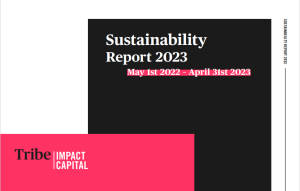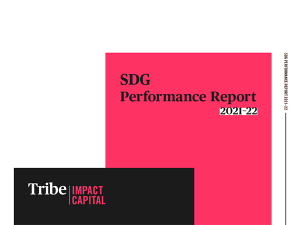Impact investing for charities

Investing with an
Impact Lens
More and more charities are opting to include impact into their overall investment objectives. Our charitable clients do this in several ways, from
Social Investments
Our approach helps trustees to align their investments with their objectives in relation to their beneficiaries, thus strengthening their theory of change. Furthermore, impact investing helps to mitigate systemic risks that traditional investment approaches often fail to consider such as environmental (i.e. the robustness of a company to climate risk) and social risks (i.e. a company being hit by regulatory controversy or customer apathy), as well as traditional ethical and reputational risks.
In order to achieve a mainstream understanding of impact investing in the charity sector, we believe that two core ingredients are necessary. The first is regulatory guidance and we welcome the Charity Commission’s consultation and ongoing work to understand impact investing1. Second, is the role of wealth managers who are offering truly impactful solutions, above and beyond ethical exclusion policies or ESG solutions (more on the difference between ESG and impact can be found here ).
The case study below from the Bishop Radford Trust, a client of Tribe, highlights the journey and success a charity can have by applying an
Impact Lens
“Incorporating an impact lens into our investment strategy and one that still delivers healthy returns is truly a win-win for us. As trustees, we find ourselves more engaged in the portfolio now that it includes investments which are genuinely doing good. Now we are able to measure impact with our endowment pot as well as the funds we donate to grantees each year”
Suzie O’Brien, BRT Trustee
Bishop Radford Trust (BRT) Tribe Portfolio
Invested £2.6M February 2020
Medium risk, multi-asset portfolio
Portfolio value £3M as at October 2020
BRT background
The Bishop Radford Trust is a Christian charitable trust. Established in 2006, the trust has an endowment fund which is invested. In addition to this, the trust gives out approximately half a million pounds in grants each year to support Christian work through UK registered charities and churches in the UK and overseas.
Why did BRT decide to invest with Tribe instead of a non-impact wealth manager?
We felt drawn towards impact investing. We were particularly interested in the prospect of investing in line with the
UN Sustainable Development Goals (UN SDGs)
What was BRT’s understanding of impact investing before meeting Tribe?
Like most, we’ve found impact investing to be a journey. We started by looking at
Exclusions
Tribe is able to provide tangible illustrations of investments that are solving major global challenges. Tribe’s investment model is unique in that it aligns every investment to one or more of the SDGs so you can align the investments in your portfolio to the ones that matter most to you. You can bring your charitable objectives inline with your investment objectives down to the individual companies you invest in.
Overview of BRT journey into impact investing with Tribe
Tribe has an impact profiling tool called ImpactDNA which helped us understand and aggregate our preferences for the good we were seeking from our investments. Four trustees and two BRT advisors completed the ImpactDNA process. We found the process engaging and it really got us thinking about how we wanted to align our portfolio with our shared values. Our collective outputs from the process were combined determining that our impact priorities were most closely aligned to SDGs creating positive impacts on the environment and ecology, closely followed by education and equality. This wasn’t a surprise as one of the catalysts for our move into impact investing came from a trip some trustees went on to Greenland with Active
Philanthropy
As part of the journey we’re on with Tribe, we’re able to learn about the different investment opportunities that are working to better the world. Being able to plug into the businesses that are at the forefront of innovation and technology is something unique to impact investing.
What would you tell another charity thinking about moving some assets into an impact focused portfolio?
To actively engage in the process. You quickly realise there is a difference between ESG and impact investing. Impact investing doesn’t just shape your investments it defines them. The market is flooded with various types of sustainable investment opportunities but the more you look into it, you realise it’s not a fad or a trendy way to invest, it’s just good investing. With Tribe you’re having different conversations about your investment portfolio. You’re speaking about all-encompassing performance from the perspective of both investment returns and impact returns.
I would ask other charities to ask themselves – how would you feel if you had an investment portfolio comprised entirely of companies that aren’t just doing good for the world but performing well too?




